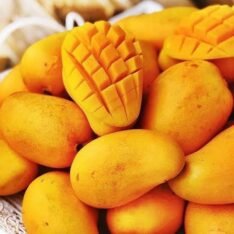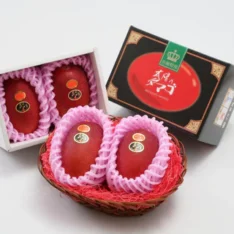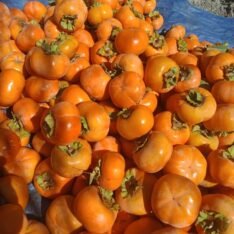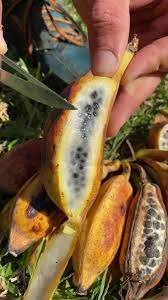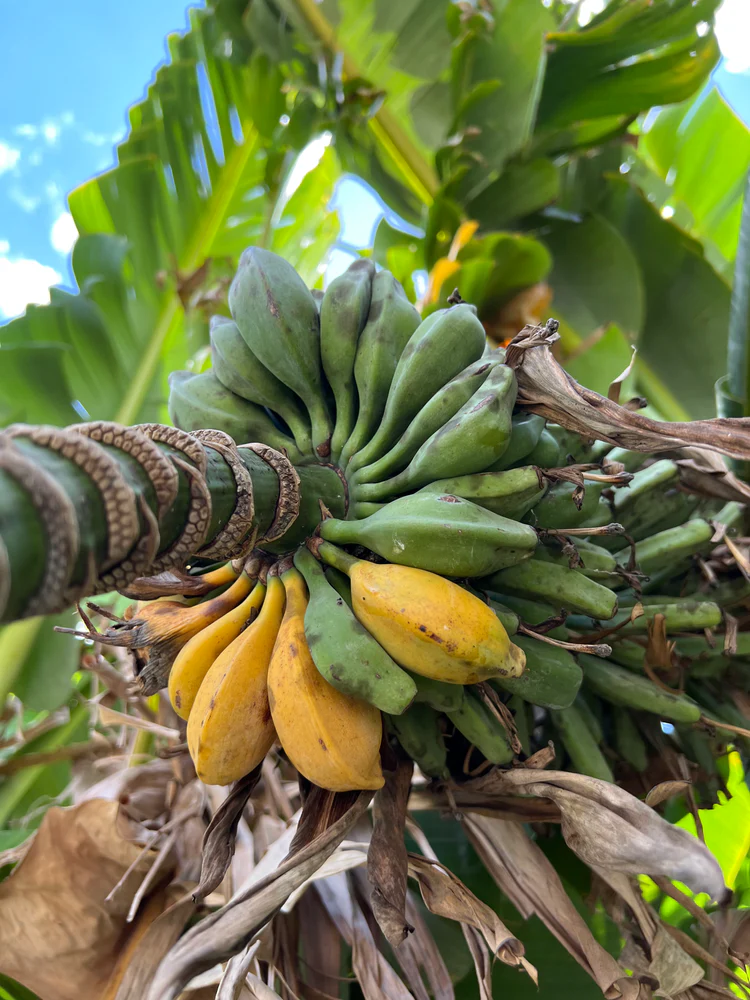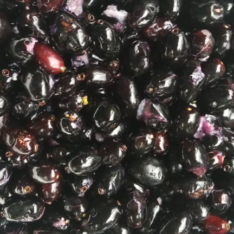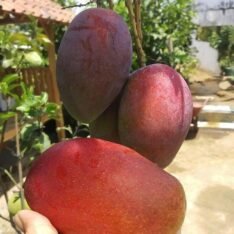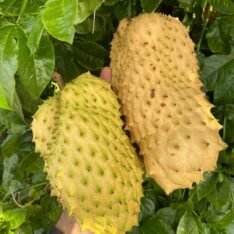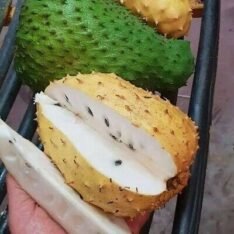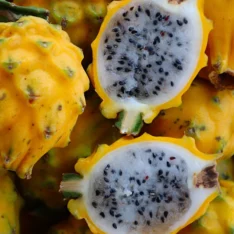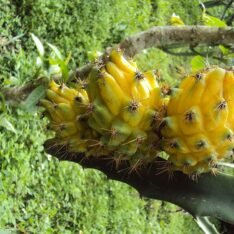Subtotal: $670.00
Buy Seeded Banana Fruit Box USA | Tropical Fruits Delivery
Price range: $15.00 through $190.00
- Wild bananas historically contained large, hard seeds.
- Modern, seedless bananas developed through selective breeding and vegetative propagation.
- Seeded varieties are important for genetic diversity and disease resistance
QUANTITY
Choose an option
Add to cart
Buy Now
Seeded Banana Fruit Box : Unpeeling the Past
We all know and love the smooth, creamy, Seeded Banana Fruit Box that are a staple in our fruit bowls. But what if I told you that the banana as we know it is a relatively recent invention, and that its wild ancestors were, well, full of seeds?
Buckle up, because we’re about to embark on a fascinating journey into the world of seeded bananas, exploring their history, their role in modern agriculture, and why you might just want to Buy Seeded Banana Fruit Box that offers a glimpse into this forgotten past.
Banana Fruit History: A Seedy Beginning
Before the neatly packed Cavendish Banana we find in every supermarket, bananas were a very different fruit. The wild ancestors of today’s beloved snack, primarily Musa acuminata and Musa balbisiana, were abundant with large, hard, and often bitter seeds. Imagine biting into a banana only to encounter a mouthful of pea-sized, rock-hard pellets! It’s a far cry from the easy eating experience we’re accustomed to.
The story of how we got from these seedy wild varieties to the seedless wonders of today is a testament to thousands of years of human ingenuity and selective breeding. Evidence suggests that bananas were first cultivated as far back as 10,000 years ago in New Guinea.
Early farmers observed natural mutations, called parthenocarpy, where some banana plants produced fruit without the need for fertilization, resulting in fewer or no seeds. They then propagated these desired traits through cuttings and suckers, essentially cloning the seedless varieties. This process, known as vegetative reproduction, is why most commercially grown bananas today are genetically identical.
Seeded vs. Seedless: A Tale of Two Bananas
The most striking difference between seeded and seedless bananas is, of course, the presence of seeds. While the tiny, almost imperceptible black specks in a Cavendish banana are sterile ovules, true seeded bananas contain prominent, dark, and hard seeds that can be quite a mouthful.
Banana Exotic Fruit: Where Do Seeded Varieties Thrive?
While the Cavendish reigns supreme globally, seeded bananas are far from extinct. They are primarily found in their native regions of Southeast Asia, particularly in Indonesia, Malaysia, and the Philippines. Here, varieties like Musa balbisiana, often called “Pisang Batu” or “Klutuk” in Indonesia, are still cultivated and appreciated for their unique characteristics.
Beyond their natural habitats, you might encounter Seeded Bananas in specialty fruit markets or from growers dedicated to preserving rare and heirloom varieties. These are truly Exotic Banana Varieties that offer a glimpse into the fruit’s ancient past. They are also important for scientific research, as they hold the genetic diversity needed to combat diseases threatening modern, monoculture banana crops.
How to Consume Seeded Banana Fruit
So, if you manage to Order Banana Fruit Near Me? and get your hands on some seeded bananas, how exactly do you eat them? It’s definitely not the peel-and-eat experience you’re used to!
Due to the abundance of hard seeds, seeded bananas are often used differently than their seedless counterparts. In many traditional cuisines, especially in Southeast Asia, young seeded bananas are peeled, deseeded, and then used in dishes like “sweet rujak,” a traditional Javanese fruit salad with a sweet and spicy peanut sauce.
The firm flesh can also be separated from the seeds and used for baking, in beverages, or added to smoothies, where the seeds can be strained out or simply provide a unique texture if ground. Some people brave eating them fresh, carefully spitting out the hard seeds, much like with wild berries.
It’s important to remember that while the pulp of seeded bananas is edible and often quite sweet, the seeds themselves can be very bitter and hard. However, these seeds are viable, meaning you can actually plant them and grow your own seeded banana trees, offering a truly unique gardening experience.
Seeded Banana Fruit Review: Why They Matter Today
While not a commercial contender for fresh eating, seeded bananas hold immense value, especially in the face of ongoing threats to the global banana supply. The current dominant variety, the Cavendish, is highly susceptible to diseases like Panama Disease, specifically Tropical Race 4 (TR4), which has devastated banana farms worldwide.
Because Cavendish bananas are clones, they lack genetic diversity, making them incredibly vulnerable. This is where seeded, wild banana varieties become heroes. They possess the genetic resistance that modern bananas desperately need.
Researchers are actively working to cross-breed these wild, seeded species with cultivated varieties to develop new, disease-resistant bananas. It’s a critical effort to ensure the future of this beloved fruit. So, while a Seeded Banana Fruit Box might not be your everyday snack, it represents a vital genetic library for the banana industry.
Seeded Banana Fruit Box
- Wild bananas historically contained large, hard seeds.
- Modern, seedless bananas developed through selective breeding and vegetative propagation.
- Seeded varieties are important for genetic diversity and disease resistance (e.g., against Panama Disease TR4).
- Seeded bananas are often cooked or processed to remove seeds, not typically eaten fresh due to seed texture and bitterness.
- Primarily found in native regions of Southeast Asia or specialty markets.
The Future of Seeded Banana Fruit: A Nod to Diversity
The challenges facing the banana industry highlight the importance of biodiversity. Relying on a single, genetically identical variety, no matter how productive, is a risky strategy. By understanding and utilizing the genetic wealth of wild, seeded bananas, we can build a more resilient and sustainable future for this essential crop.
Perhaps in the coming years, we’ll see new hybrid bananas emerge – fruits that retain the delicious qualities we love but with enhanced disease resistance, thanks to their wild, seedy ancestors. It’s a reminder that sometimes, looking back to the past provides the best solutions for the future.
So next time you reach for a banana, take a moment to appreciate its incredible journey, from a seedy wild fruit to the convenient, nutritious snack it is today, and the ongoing efforts to protect its future by embracing the diversity of its roots.
Additional Information
| QUANTITY | 1 Pound, 5 Pounds Box, 10 Pounds Box, 25 Pounds Box |
|---|

